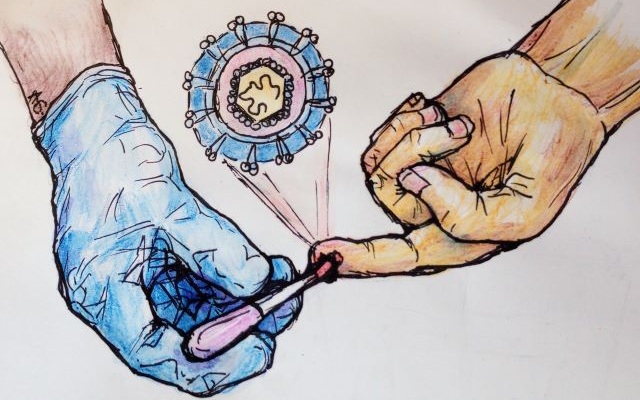Urinary Metabolite GWAS Leads to Biomarkers of Kidney Disease
By LabMedica International staff writers
Posted on 04 Feb 2020
The kidneys integrate information from continuous systemic processes related to the absorption, distribution, metabolism and excretion (ADME) of metabolites. Scientists have identified ties between urine metabolite levels and common genetic variants, laying the foundation for a more refined view of human metabolic processes and the tissues in which they take place.Posted on 04 Feb 2020
Prior studies suggest that tissues from several key organs, from the liver and kidneys to the blood and intestinal tract, have a part to play in different aspects of ADME. It is suspected that there might be much more to learn about metabolism by testing urine samples in individuals with lower-than-usual metabolite detoxification and transport in the kidney's proximal tubules due to existing kidney conditions.

Image: Histopathology of kidney disease: showing completely sclerotic glomeruli and severe chronic tubulointerstitial nephritis (Photo courtesy of Jian-Hua Qiao, MD, FCAP).
Scientists from the University of Freiburg (Freiburg, Germany) performed a genome-wide association study (GWAS) involving 1,627 individuals with diminished kidney function, searching for genetic loci coinciding with urine metabolite concentrations. Included in the study were urinary concentrations of 1,172 metabolites. The metabolic GWAS (mGWAS) led to 240 loci with apparent ties to urine metabolite concentrations, while their follow-up fine-mapping and single-cell expression analyses helped focus in on potential disease-causing genes, the cell types involved, and the urinary metabolites that may flag genetic predisposition to kidney disease.
The 240 unique metabolite–locus associations (metabolite quantitative trait loci, mQTLs) that were identified and replicated highlight novel candidate substrates for transport proteins. The identified genes are enriched in ADME-relevant tissues and cell types, and they reveal novel candidates for biotransformation and detoxification reactions. Fine mapping of mQTLs and integration with single-cell gene expression permitted the prioritization of causal genes, functional variants and target cell types. The combination of mQTLs with genetic and health information from 450,000 UK Biobank participants illuminated metabolic mediators, and hence, novel urinary biomarkers of disease risk.
The authors concluded that this comprehensive resource of genetic targets and their substrates is informative for ADME processes in humans and is relevant to basic science, clinical medicine and pharmaceutical studies. The study was published on January 20, 2020 in the journal Nature Genetics.
Related Links:
University of Freiburg













